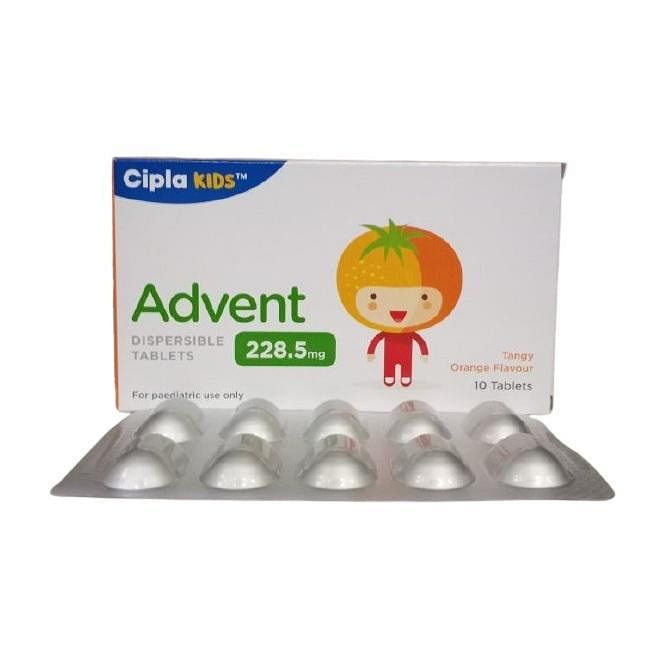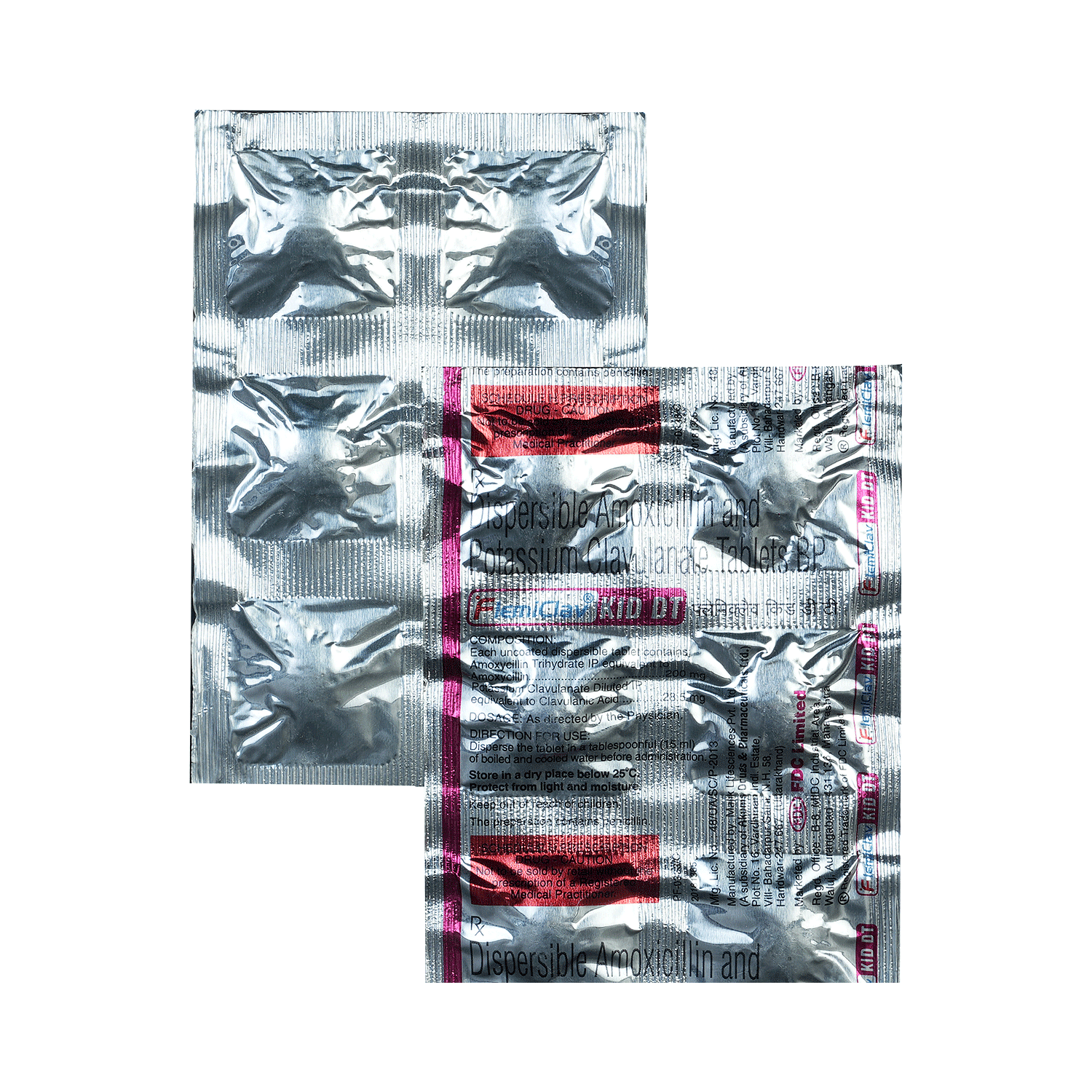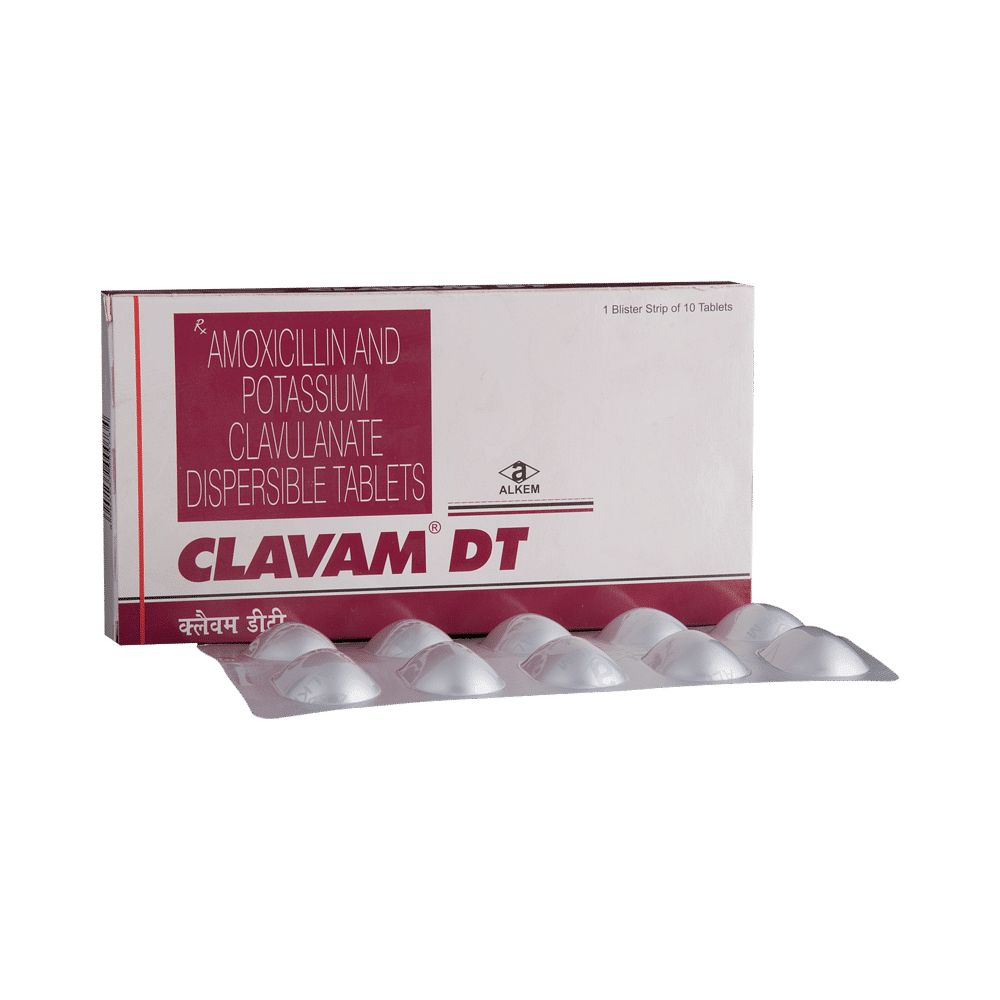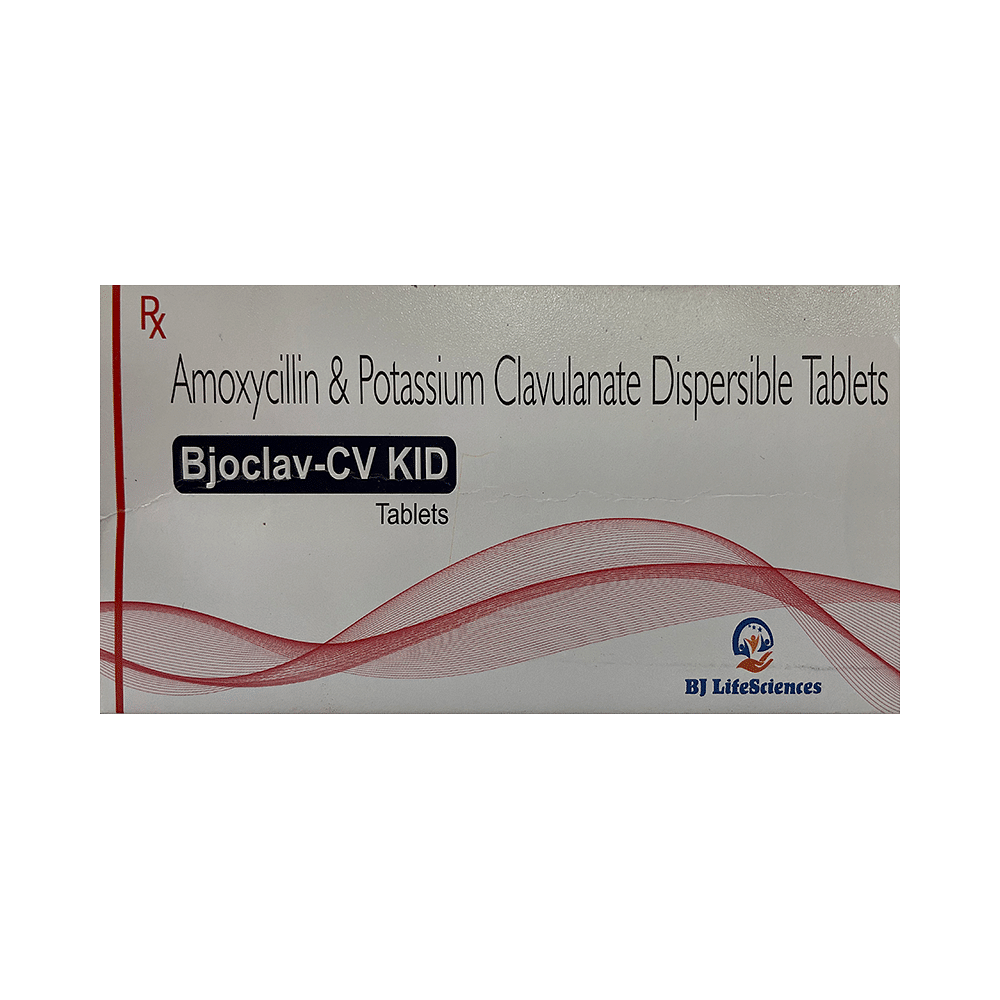
Clavidur Kid Tablet DT
Manufacturer
Lupin Ltd
Salt Composition
Amoxycillin (200mg) + Clavulanic Acid (28.5mg)
Key Information
Short Description
Clavidur Kid Tablet DT is an antibiotic medicine that helps treat bacterial infections of the ear, nose, throat, chest, lungs, teeth, skin, and urinary tract.
Dosage Form
Tablet DT
Introduction
Clavidur Kid Tablet DT is an antibiotic medicine that helps treat bacterial infections of the ear, nose, throat, chest, lungs, teeth, skin, and urinary tract. It is capable of killing bacteria that have become resistant to other therapies and thus also helps treat tuberculosis that is resistant to other treatments.
Directions for Use
Your child must complete the entire course of antibiotics. Stopping too soon may cause the bacteria to multiply again or cause another infection.
How it works
Clavidur Kid Tablet DT is an antibiotic. It has two active agents amoxycillin and clavulanic acid. Amoxycillin works by preventing the formation of the bacterial protective covering (cell wall) essential for the survival of the bacteria. Whereas clavulanic acid serves a special purpose of inhibiting an enzyme (beta-lactamase) that is produced by resistant bacteria. This makes the combination of amoxycillin and clavulanic acid an effective line of treatment for many types of infections.
Quick Tips
Your child must complete the entire course of antibiotics. Stopping too soon may cause the bacteria to multiply again or cause another infection. Encourage your child to drink plenty of water in case diarrhea develops as a side effect. Never give Clavidur Kid Tablet DT until and unless prescribed by the doctor. Do not give Clavidur Kid Tablet DT to treat common cold and flu-like symptoms caused by viruses. Check ‘expiry’ before giving Clavidur Kid Tablet DT to your child. Immediately discard all the expired medicines.
Related Medicines

Advent 200mg/28.5mg Tablet DT

Awin Kid 200mg/28.5mg Tablet DT

Delpoclav 228.5mg Tablet DT

Flemiclav Kid DT Tablet Tablet DT

Pabetalin 228.5 DT Tablet

Curam DT 228.5mg Tablet

Clavam DT Tablet

Moxyrax-CV Kid Tablet DT

Bjoclav-CV Kid Tablet DT

Welclave Kid 200mg/28.5mg Tablet DT
Frequently asked questions
Can other medicines be given at the same time as Clavidur Kid Tablet DT?
Interactions between medications can occur. Inform your doctor about any other medications your child is taking before starting Clavidur Kid Tablet DT. Consult with your child's doctor before administering any additional medication.
Can I get my child vaccinated while on treatment with Clavidur Kid Tablet DT?
Typically, antibiotics do not interfere with vaccine ingredients or cause adverse reactions in children who have recently been vaccinated. However, it is recommended to delay vaccinations until the child has recovered from their illness. Once your child feels better, vaccination can proceed as usual.
Which lab tests may my child undergo while taking Clavidur Kid Tablet DT on a long-term basis?
During prolonged therapy, your doctor may schedule periodic kidney and liver function tests to monitor your child's condition.
Can I give a higher than the recommended dose of Clavidur Kid Tablet DT to my child?
No, administering higher doses than recommended can increase the risk of adverse effects. If you notice increased symptoms severity, consult with your doctor for reevaluation.
Can I stop giving Clavidur Kid Tablet DT to my child when the symptoms are relieved?
No, do not discontinue medication unless the full treatment course is completed, even if symptoms improve. The infection may not be fully cured, and continued treatment is necessary for optimal results.
Can the use of Clavidur Kid Tablet DT cause diarrhea?
Yes, diarrhea can occur as a side effect due to Clavidur Kid Tablet DT's ability to kill harmful bacteria while potentially affecting beneficial stomach bacteria. Encourage your child to drink plenty of fluids and consult with a doctor if diarrhea persists or leads to signs of dehydration.
Do all viral common colds result in secondary bacterial infection?
Mostly, bacterial infections do not follow viral infections. Administering antibiotics for viral infections can increase the risk of side effects, so use them judiciously under your child's doctor's guidance.
The mucus coming out of my child’s nose is yellow-green. Is it a sign of a bacterial infection?
Yellow or green mucus in the nose does not necessarily indicate the need for antibiotics. During a common cold, mucus thickening and color change are normal symptoms that typically last 7-10 days.
Is there any sign which shows that my child needs immediate medical attention?
Seek immediate medical attention if your child experiences serious allergic reactions (breathing problems, skin rashes), gastrointestinal infections (diarrhea), or liver damage (weakness, paleness, vomiting). These are rare but severe side effects requiring prompt expert care.


